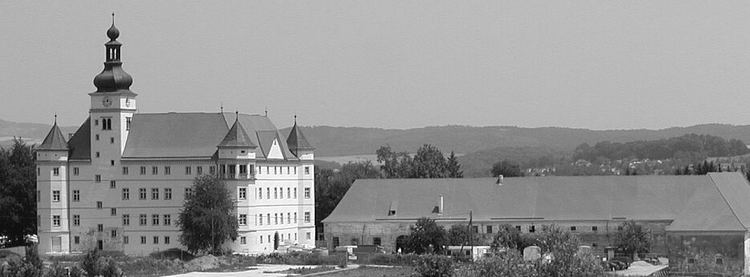 | ||
The Hartheim Euthanasia Centre (German: NS-Tötungsanstalt Hartheim) was a killing centre involved in the Nazi euthanasia programme, also referred to as Action T4. The killing centre was housed in Hartheim Castle in the municipality of Alkoven, near Linz, Austria.
Contents
- Hartheim statistics
- Numbers killed in the first extermination phase in Hartheim
- 14 f 13 Special Treatment programme
- Death doctors
- Niedernhart holding station
- Move of euthanasia head office to Hartheim and Weissenbach am Attersee
- Well known victims
- The clergy
- Hartheim T4 staff
- Audio and video
- References
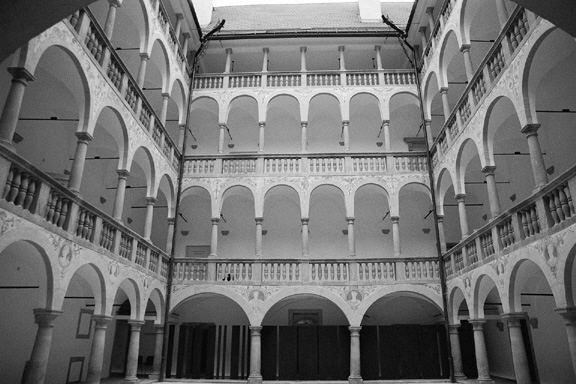
Hartheim statistics
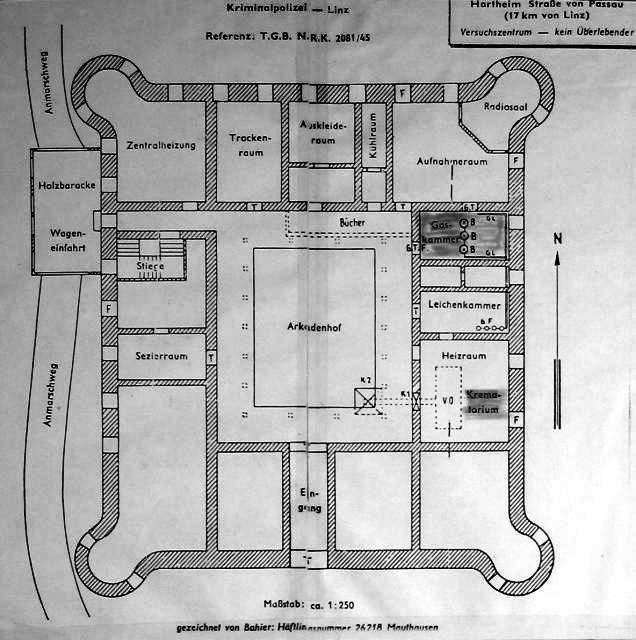
In June 1945, during investigations by US Forces into the former gassing facility at Hartheim, the American investigating officer Charles Dameron broke open a steel safe in which the Hartheim statistics were found. This was a 39-page brochure produced for the internal purposes of the Nazi euthanasia programme (Aktion T4), and contained monthly statistics of the gassing of mentally and physically handicapped patients (called "disinfection" in the document) carried out in the six euthanasia institutions on the territory of the Reich. In 1968 and 1970 an ex-employee of the establishment revealed, as a witness, that he had to compile the material at the end of 1942. The Hartheim statistics included a page on which it was calculated that "disinfecting 70,273 people with a life expectation of 10 years" had saved food in the value of 141,775,573.80 Reichsmarks.
Numbers killed in the first extermination phase in Hartheim
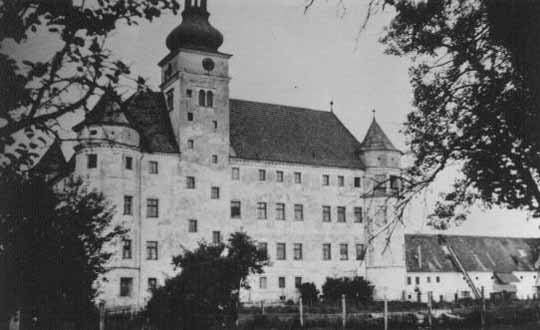
According to the Hartheim statistics, a total of 18,269 people were killed in the gas chamber at the Hartheim euthanasia centre in the period of 16 months between May 1940 and 1 September 1941, as follows:
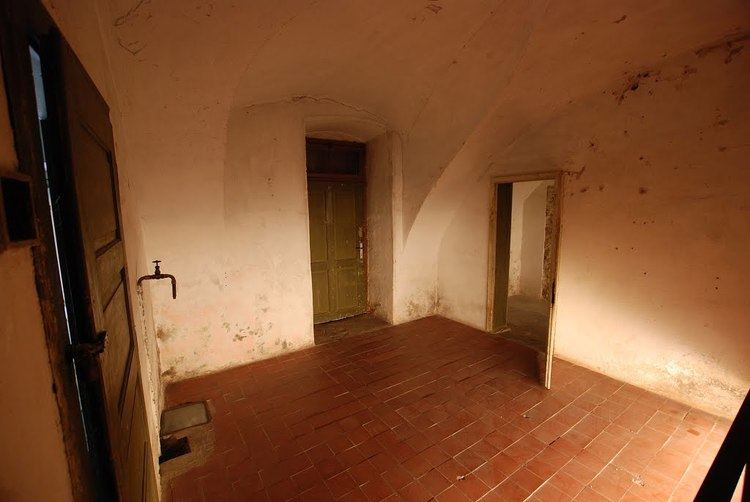
These statistics only cover the first extermination phase of the Nazi's euthanasia programme, Action T4, which was brought to an end by Hitler's order dated 24 August 1941 after protests by the Roman Catholic Church.

In all it is estimated that a total of 30,000 people were executed at Hartheim. Among those killed were sick and disabled persons as well as prisoners from concentration camps. The killings were carried out by carbon monoxide poisoning.
14 f 13 "Special Treatment" programme
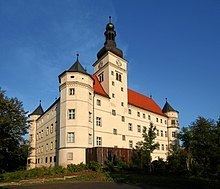
Just three days after the formal end of Action T4, a lorry arrived at Hartheim with 70 Jewish inmates from Mauthausen concentration camp who were subsequently executed there. The Hartheim killing centre achieved a special notoriety, not just because it was where the largest number of patients were gassed, but because as part of Action 14f13 Hartheim was also the institution in which the most concentration camp prisoners were executed. Their numbers are estimated at 12,000.
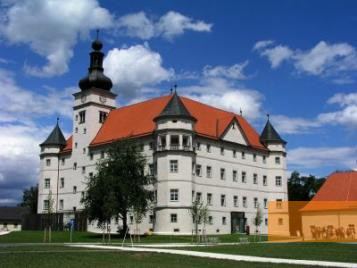
Prisoners at Mauthausen who were no longer capable of working, especially in the quarries, and politically undesirable prisoners were brought to Hartheim to be executed. In the papers these transfers were disguised with terms like "recreation leave". The entries under "sickness" included "German-haters", "communist" or "Polish fanatic". From 1944 on, the prisoners were no longer selected by T4 doctors; the objective was simply to gain space in the Mauthausen camp quickly. Other transports came from the concentration camp of Gusen, and probably also from Ravensbrück during 1944, made up of women inmates who were predominantly tuberculosis sufferers and those deemed mentally infirm.
Death doctors
The Action T4 organisers, Viktor Brack and Karl Brandt, ordered that the execution of the sick had to be carried out by medical doctors because Hitler's memorandum of authorisation of 1 September 1939 only referred to doctors. The operation of the gas tap was thus the responsibility of doctors in the death centres. However, during the course of the euthanasia programme, the gas cocks were occasionally operated by others in the absence of the doctors or for other reasons. Also, many doctors used pseudonyms rather than their real names in the documents.
The following death doctors worked in Hartheim:
Niedernhart holding station
The Action T4 euthanasia centres had intermediate holding stations for victims. For example, many lorries carrying victims to their destination at Hartheim went via the Niedernhart Mental Institute in Linz, where Rudolf Lonauer was the senior doctor, as he was in Hartheim. There victims were mainly killed by starvation or drug overdose. Time and again, patients were screened and categorised, then a bus was filled with the chosen victims and driven to Hartheim.
Move of euthanasia head office to Hartheim and Weissenbach am Attersee
In August 1943 a result of the air war the head office for the Nazi Euthanasia Programme was moved from Tiergartenstrasse 4, Berlin, to the Ostmark region, which was then humorously described as the air raid shelter of the Reich. The statistic and documents by Paul Nitsche – correspondence, notices and reports ended up in Hartheim (office department, accounts office) and the Schoberstein Recreation Centre near Weißenbach am Attersee (medical department) – presumably as part of the move of the T4 head office.
Well-known victims
The clergy
A total of 310 Polish, seven German, six Czech, four Luxemburg, three Dutch and two Belgian priests were killed. Many of them were transported from the Priest's Block in Dachau concentration camp. The chaplain, Hermann Scheipers, was also moved to the Invalid's Block, in order to be taken to Hartheim. Scheiper's sister — who stayed in contact by letter — tracked down a certain Dr. Bernsdorf, employee of the RSHA Berlin-Oranienburg, who was responsible for the clergy imprisoned in the Priest's Block. She confronted him and stated that, in Münsterland, it was an open secret that imprisoned priests were sent to the gas chamber. Bernsdorf apparently became very nervous during the discussion and telephoned the Commandant's Office at Dachau. Scheipers reported that it was on that same day, the 13 August 1942, that there was a response: he and three other German clergymen were moved from the Invalid's Block (where the SS assembled prisoners for onward transportation) back to the Priest's Block.
Hartheim T4 staff
Those chiefly responsible for recruiting the lower-ranking staff, according to subsequent witness statements, were the two Gau inspectors, Stefan Schachermayr (1912–2008) and Franz Peterseil (1907–1991), as well as Adolf Gustav Kaufmann (1902–1974), head of the inspection department of the T4 central office in Berlin.
